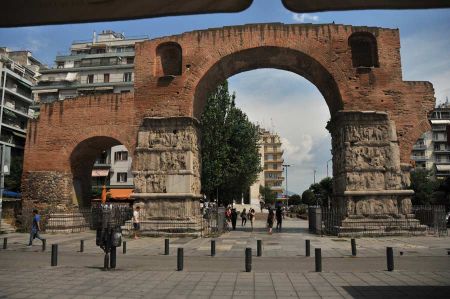Thessaloniki - Metropolis - Modernity and History
- Written by Portal Editor
After our first explorations in Thessaloniki, which gave us some unexpected aha experiences, it is time to take stock of our visit to Thessaloniki. We came across the cycle path network in an insightful and unexpected way, to name just one example.
On the one hand, there are the prefabricated buildings so typical of the 1970s, which also dominate the wonderful waterfront of the Thermaic Gulf, and then, in the middle of the canyons, deep excavation sites of ancient buildings from the Roman Empire suddenly open up.
An extremely young and lively city, at least that's what the streetscape looks like
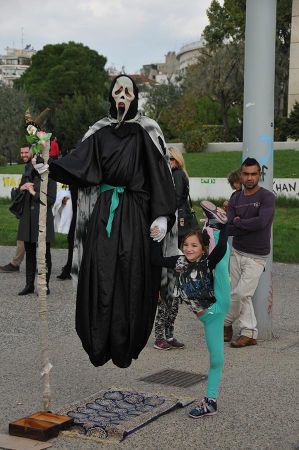 Open spaces that have the character of a square and are architecturally reminiscent of the Wilhelminian era in their development next to narrow streets that are almost completely parked, but which appear naturally green with dense, shade-providing trees in the form of avenues.
Open spaces that have the character of a square and are architecturally reminiscent of the Wilhelminian era in their development next to narrow streets that are almost completely parked, but which appear naturally green with dense, shade-providing trees in the form of avenues.
Traditional weekly market with fish and meat counters in the outdoor area of the Modiano market alongside hyper-modern bars and restaurants in sometimes inconspicuous locations.
An extremely young and lively city, at least according to the streetscape, but one that is definitely aware of its culture and history.
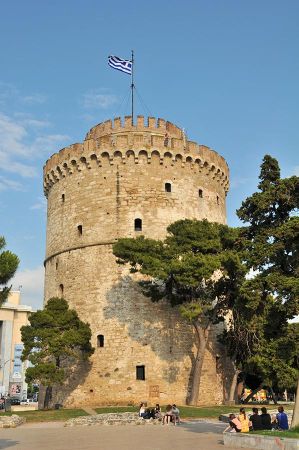 Throughout history, mainly due to its location on the Via Egnatia, Thessaloniki never lost its importance for trade and economy, despite the changing "leadership" of Romans and Byzantines, and functioned as the second largest commercial and cultural centre of the Byzantine Empire behind Constantinople.
Throughout history, mainly due to its location on the Via Egnatia, Thessaloniki never lost its importance for trade and economy, despite the changing "leadership" of Romans and Byzantines, and functioned as the second largest commercial and cultural centre of the Byzantine Empire behind Constantinople.
Thessaloniki grew into one of the metropolises of the Byzantine Empire, which was able to withstand almost all enemy attacks from the Slavic side thanks to its powerful and constantly growing city walls. Only in 904 was Thessaloniki conquered and plundered by the Saracens.
It was only during the time of the Crusades at the end of the 12th century that the Byzantine Empire was weakened by internal conflicts, before various occupiers such as the Venetians ruled over the city until 1261, and Venice even received its own district.
At the end of the 12th century, the Byzantine Empire was weakened by internal conflicts
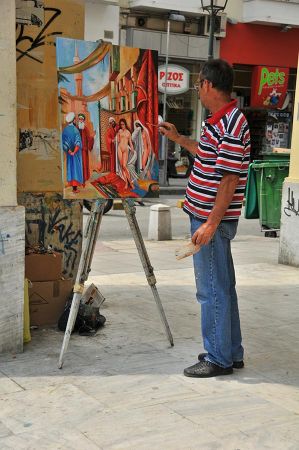 In the 10th - 13th centuries, Thessaloniki flourished economically thanks to the brisk trade of the Venetians, which was reflected, among other things, in the construction of many churches. A glorious era began for Thessaloniki, to which numerous church buildings still bear witness today, the Hagia Apostoloi, the Hagia Ekaterini, the Vlatades Monastery and the large pier that protected the harbour and part of which has been preserved to this day. You sometimes get the impression that you can actually tell the age of the building by how deeply it is founded in the current level of the ground. The finds from the Roman Via Egnatia directly on the modern Egnatia Street alone are about 5 meters below today's street level.
In the 10th - 13th centuries, Thessaloniki flourished economically thanks to the brisk trade of the Venetians, which was reflected, among other things, in the construction of many churches. A glorious era began for Thessaloniki, to which numerous church buildings still bear witness today, the Hagia Apostoloi, the Hagia Ekaterini, the Vlatades Monastery and the large pier that protected the harbour and part of which has been preserved to this day. You sometimes get the impression that you can actually tell the age of the building by how deeply it is founded in the current level of the ground. The finds from the Roman Via Egnatia directly on the modern Egnatia Street alone are about 5 meters below today's street level.
Thessaloniki felt like a centre of science: Thomas Magister (1270-1325), Demetrios Triklinios (1280-1340), Saint Gregorios Palamas (1296-1359) and Demetrios Kydones (1324-1397) worked here.
Ottoman troops put down the flaring Greek liberation struggle
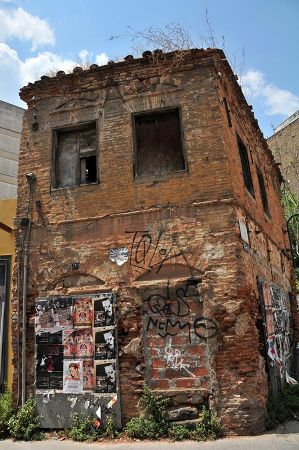 On March 29, 1430, after almost two months of siege by Sultan Murad II, the Turks conquered Thessaloniki and incorporated it into their Ottoman Empire; Thessaloniki became Selânik. In the 17th century, Selânik was the most important trading centre in the Balkans. In 1821/1822, Ottoman troops put down the flaring Greek liberation struggle, which was successful in the south of Greece and led to the founding of the Kingdom of Greece there. But even this long period of Ottoman foreign rule, which lasted in parts of the country until 1913 and thus left deep traces, could not change the fact that Thessaloniki was the largest and most important city in today's Greek territory. In 1869, the southern parts of the Byzantine city walls were demolished to make room for city expansion. On May 6, 1876, angry Muslims killed the German and French consuls in a riot, significantly straining diplomatic relations with the Ottoman Empire.
On March 29, 1430, after almost two months of siege by Sultan Murad II, the Turks conquered Thessaloniki and incorporated it into their Ottoman Empire; Thessaloniki became Selânik. In the 17th century, Selânik was the most important trading centre in the Balkans. In 1821/1822, Ottoman troops put down the flaring Greek liberation struggle, which was successful in the south of Greece and led to the founding of the Kingdom of Greece there. But even this long period of Ottoman foreign rule, which lasted in parts of the country until 1913 and thus left deep traces, could not change the fact that Thessaloniki was the largest and most important city in today's Greek territory. In 1869, the southern parts of the Byzantine city walls were demolished to make room for city expansion. On May 6, 1876, angry Muslims killed the German and French consuls in a riot, significantly straining diplomatic relations with the Ottoman Empire.
In 1871 the railway line to Skopje was built and in 1888 it was connected to the European railway network via Belgrade, and in 1896 it was continued east to Dedeağaç, today's Alexandroupolis. In 1893, the first tram was installed, pulled by Russian and Hungarian horses, contributing to the city's further expansion. During this time, the only Bulgarian high school in the Ottoman Empire, which was initially known as the Bulgarian men's school “Cyril and Methodius High School”, was built. A women's school followed later. The German School of Thessaloniki was founded in 1888 and was closed from 1915 to 1924 and 1944 to 1956, i.e. as a result of the world wars.
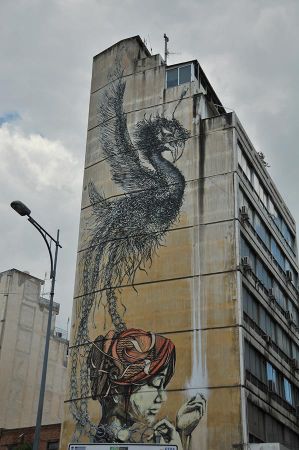 In the 19th century, Thessaloniki experienced a real growth spurt. Within 30 years (1865 to 1895) the population doubled to more than 120,000, including personalities such as the later founder of the Turkish republic, Mustafa Kemal Atatürk, who was born in Thessaloniki in 1881 (his birthplace is now a museum and part of the Turkish consulate). The Young Turkish Revolution began in 1908 with İsmail Enver and Mustafa Kemal from Thessaloniki. In 1909, the Young Turks banished the deposed Sultan Abdülhamid II to Thessaloniki and placed him under house arrest in the Villa Alatini. Thessaloniki remained under Ottoman rule until the Balkan Wars.
In the 19th century, Thessaloniki experienced a real growth spurt. Within 30 years (1865 to 1895) the population doubled to more than 120,000, including personalities such as the later founder of the Turkish republic, Mustafa Kemal Atatürk, who was born in Thessaloniki in 1881 (his birthplace is now a museum and part of the Turkish consulate). The Young Turkish Revolution began in 1908 with İsmail Enver and Mustafa Kemal from Thessaloniki. In 1909, the Young Turks banished the deposed Sultan Abdülhamid II to Thessaloniki and placed him under house arrest in the Villa Alatini. Thessaloniki remained under Ottoman rule until the Balkan Wars.
After the two Balkan wars in 1912 and 1913, Thessaloniki, along with large parts of Macedonia, was awarded to Greece in 1913. As a result, almost all mosques were demolished or rebuilt into churches.
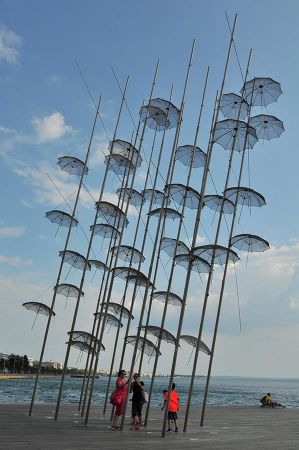 The city was severely damaged by a complex fire on September 4, 1890, which left 20,000 people, mostly Jews, homeless. Among other things, the European quarter with the British and Greek consulates, the Greek hospital, St. Sophia's Church, the Byzantine church with the government archives, the Metropolitan Church and seven synagogues burned down.
The city was severely damaged by a complex fire on September 4, 1890, which left 20,000 people, mostly Jews, homeless. Among other things, the European quarter with the British and Greek consulates, the Greek hospital, St. Sophia's Church, the Byzantine church with the government archives, the Metropolitan Church and seven synagogues burned down.
After Vitaliano Poselli had successfully established himself as an architect in Thessaloniki, his compatriot Pierro Arigoni followed around 1890, both of whom designed numerous private and public buildings and significantly shaped the image of the city, including the streets from Aristotle Square up to Egnatia.
The German School of Thessaloniki was founded in 1888
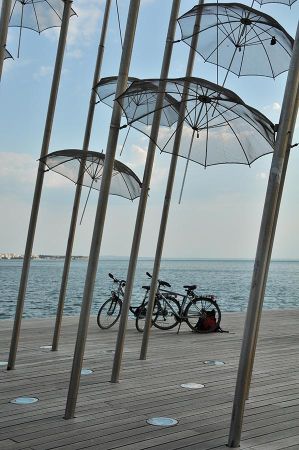 During the Second World War, it was the Germans who not only occupied the city and almost completely deported and wiped out the largest Sephardic Jewish community in Europe (50,000 people), something that many Greeks have never forgotten to this day. After the Greek Civil War, just 4 years after the end of the Second World War, the goal of many Greeks was to achieve a citizens' vote on the form of government and the withdrawal of all Allies still stationed in Greece. Finally, the reconstruction of Thessaloniki could begin and also the economy was restarted. Today Thessaloniki is the second largest city in Greece with around one million inhabitants and the economic and cultural centre of Macedonia.
During the Second World War, it was the Germans who not only occupied the city and almost completely deported and wiped out the largest Sephardic Jewish community in Europe (50,000 people), something that many Greeks have never forgotten to this day. After the Greek Civil War, just 4 years after the end of the Second World War, the goal of many Greeks was to achieve a citizens' vote on the form of government and the withdrawal of all Allies still stationed in Greece. Finally, the reconstruction of Thessaloniki could begin and also the economy was restarted. Today Thessaloniki is the second largest city in Greece with around one million inhabitants and the economic and cultural centre of Macedonia.
Although the city has many interesting sights and is urban in character, it is often only used as a transit station to the tourist areas on the Halkidiki peninsula. In Ladadika, which was formerly the olive oil merchants' quarter, you will find a district with many traditional and inexpensive taverns and ouzerias. There is still a lot to discover. Stay interested.
Please read as well:
Amsterdam - By boat through the canals
100 years Schleizer Dreieck – open paddock
https://www.alaturka.info/en/greece/thessaloniki/6369-thessaloniki-metropolis-modernity-and-history#sigProId24e7869439
